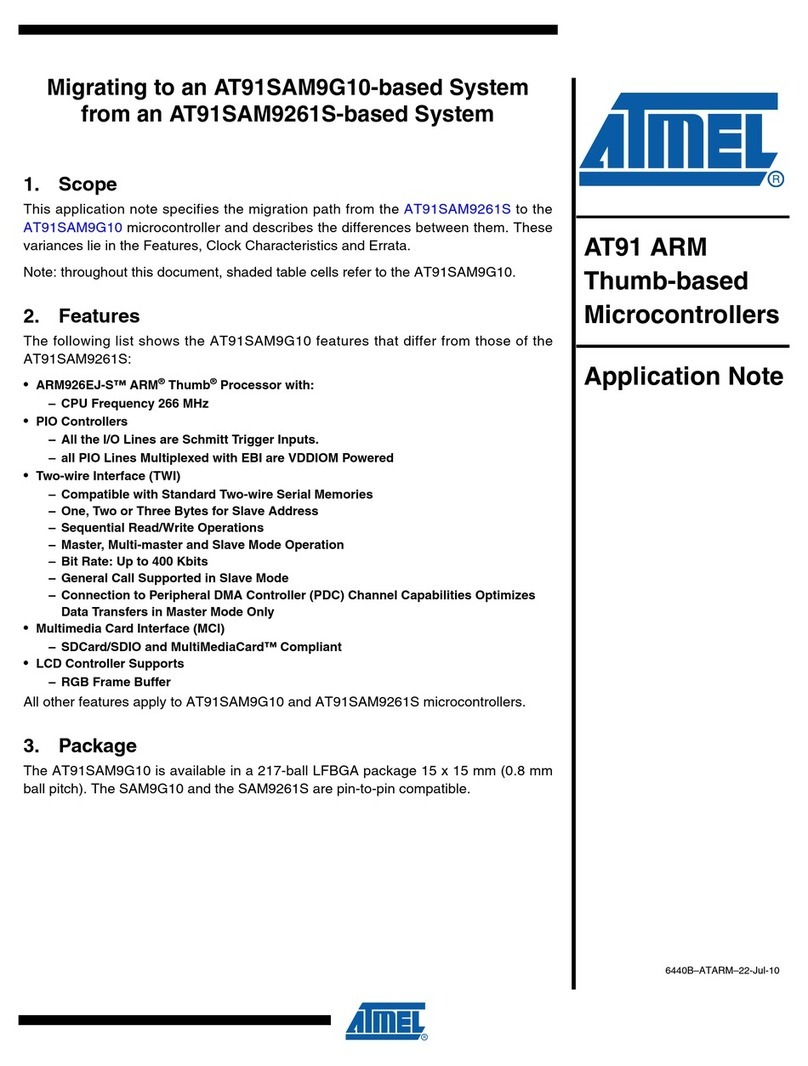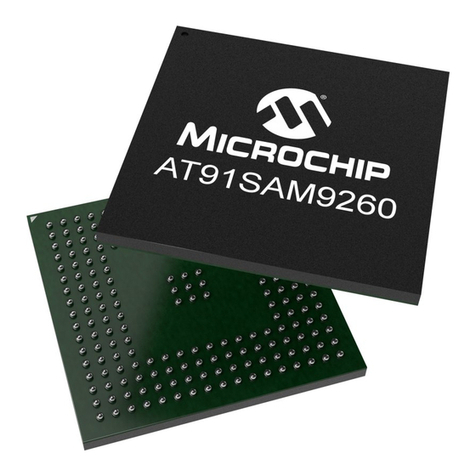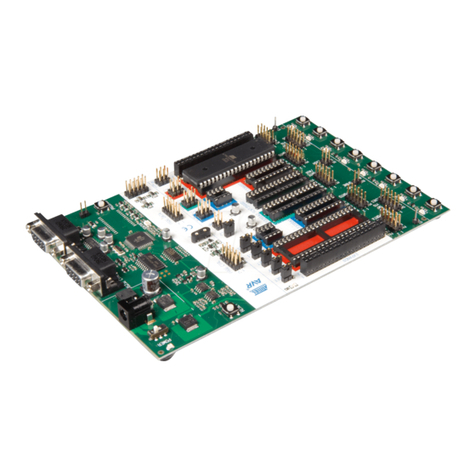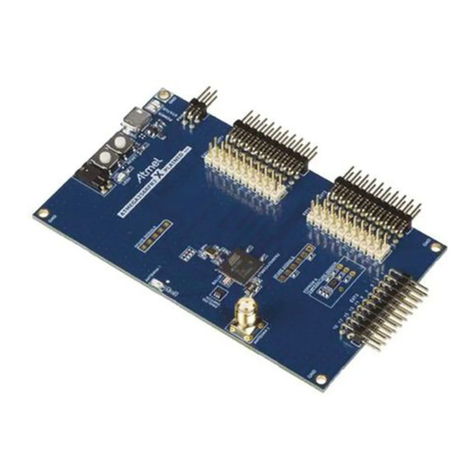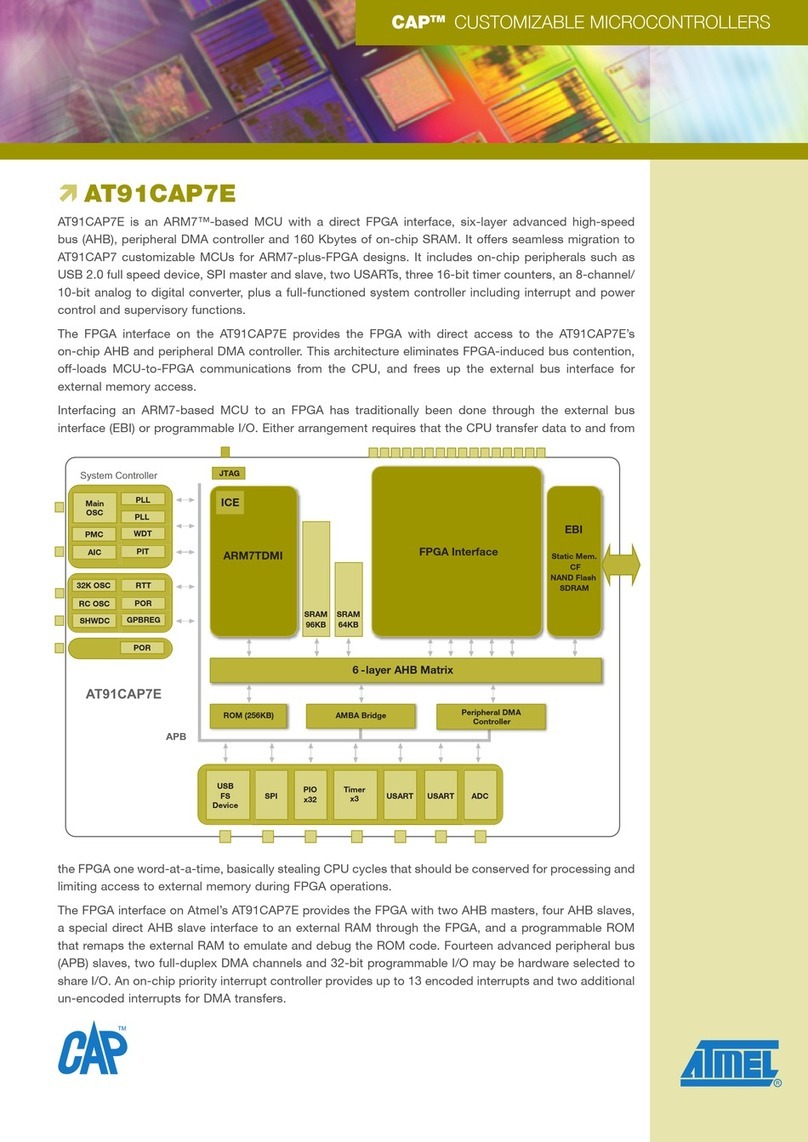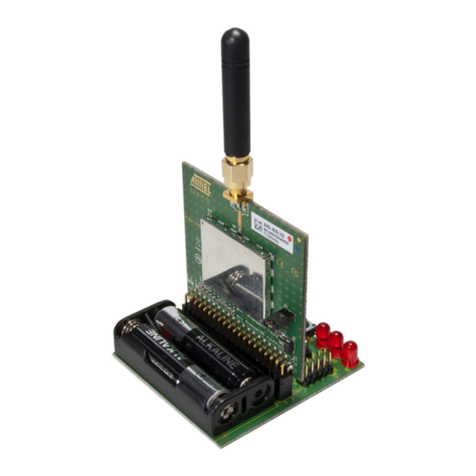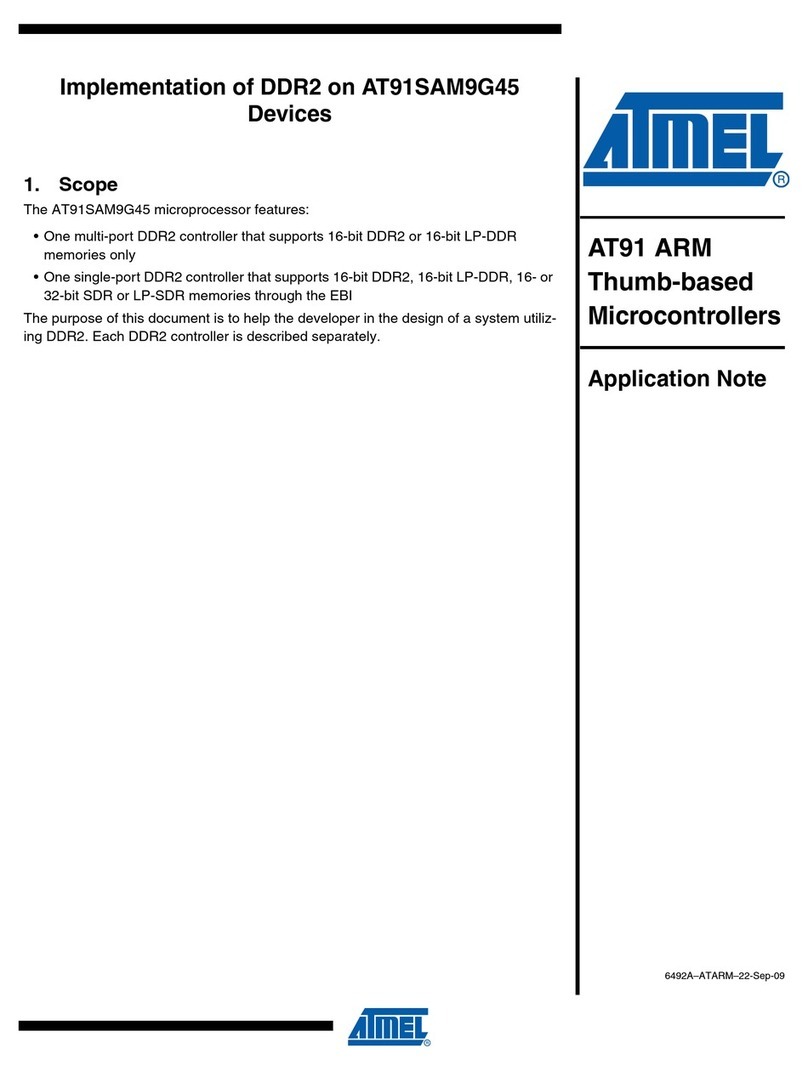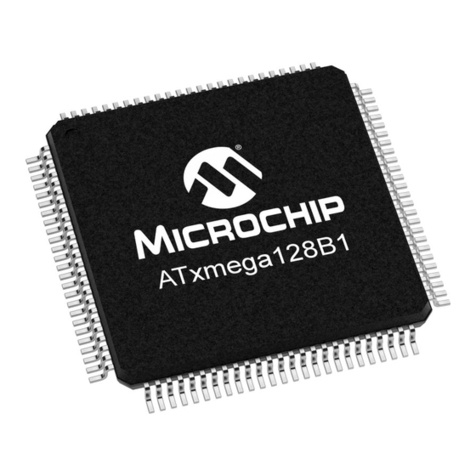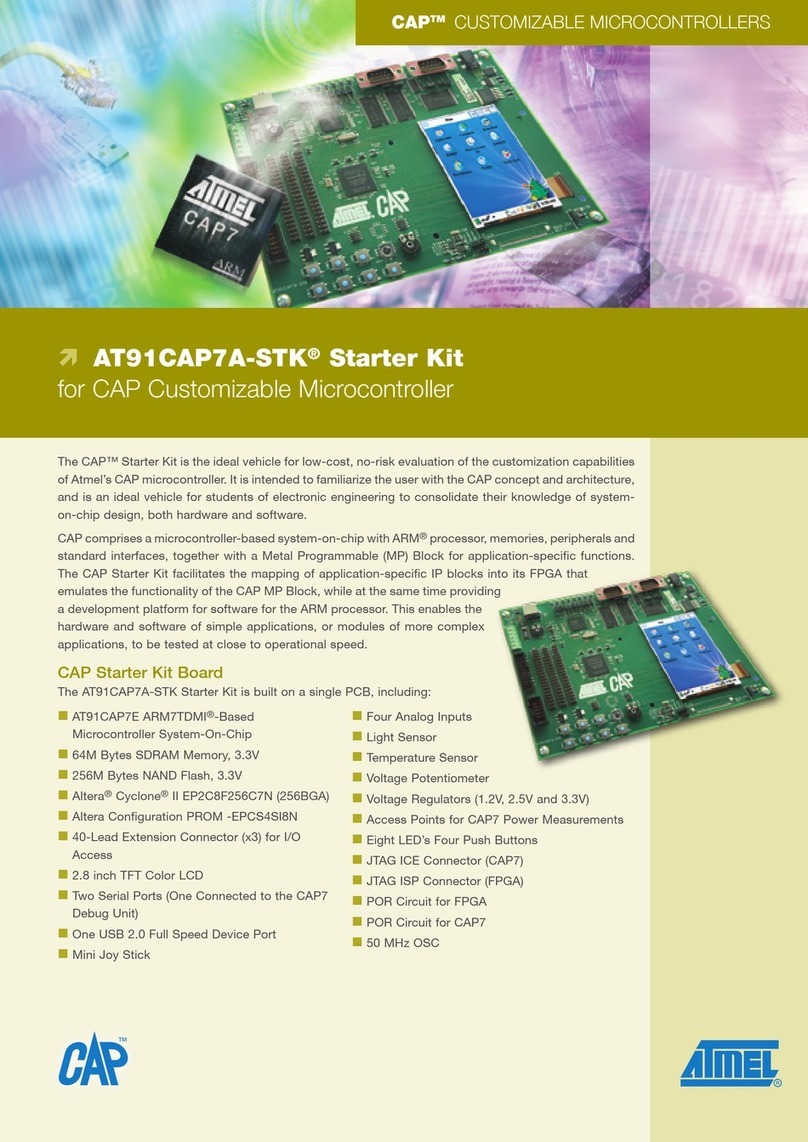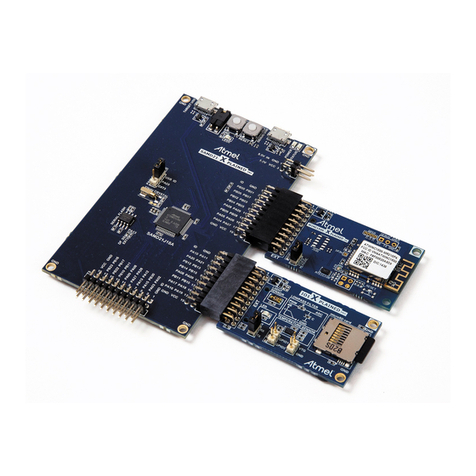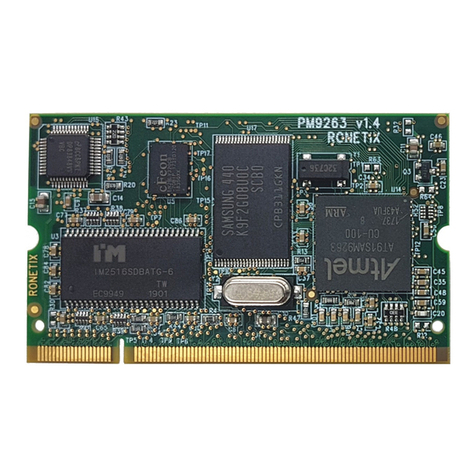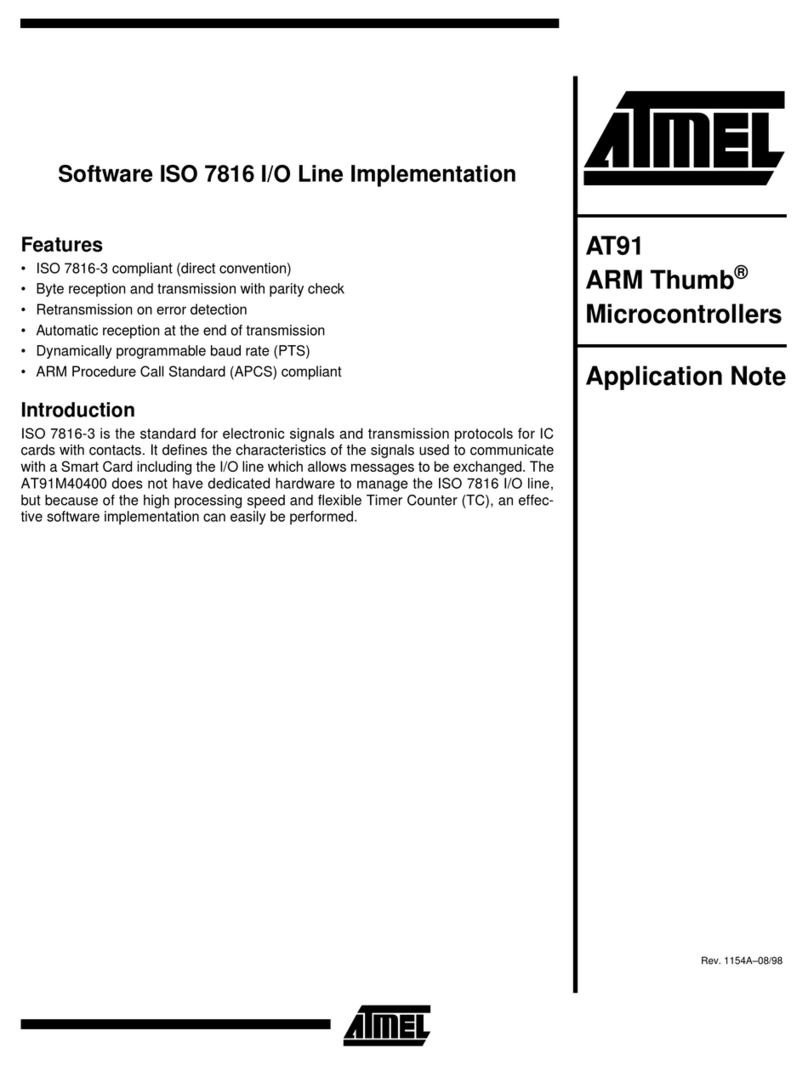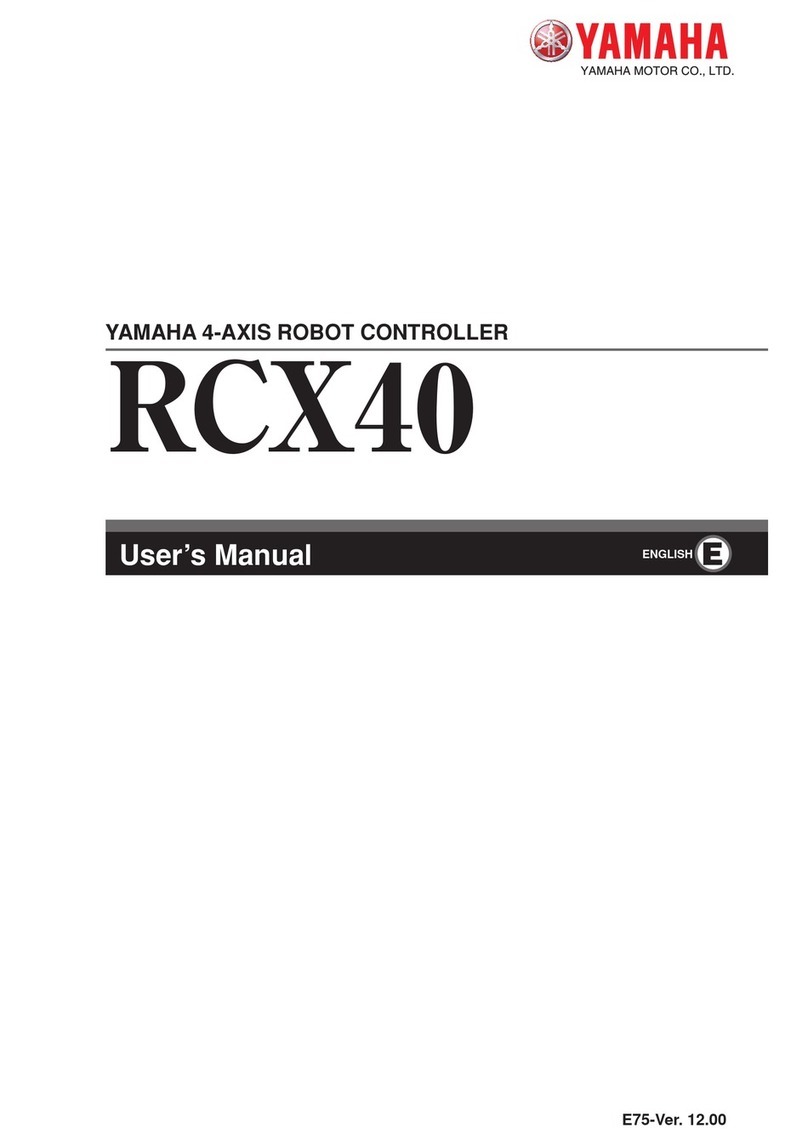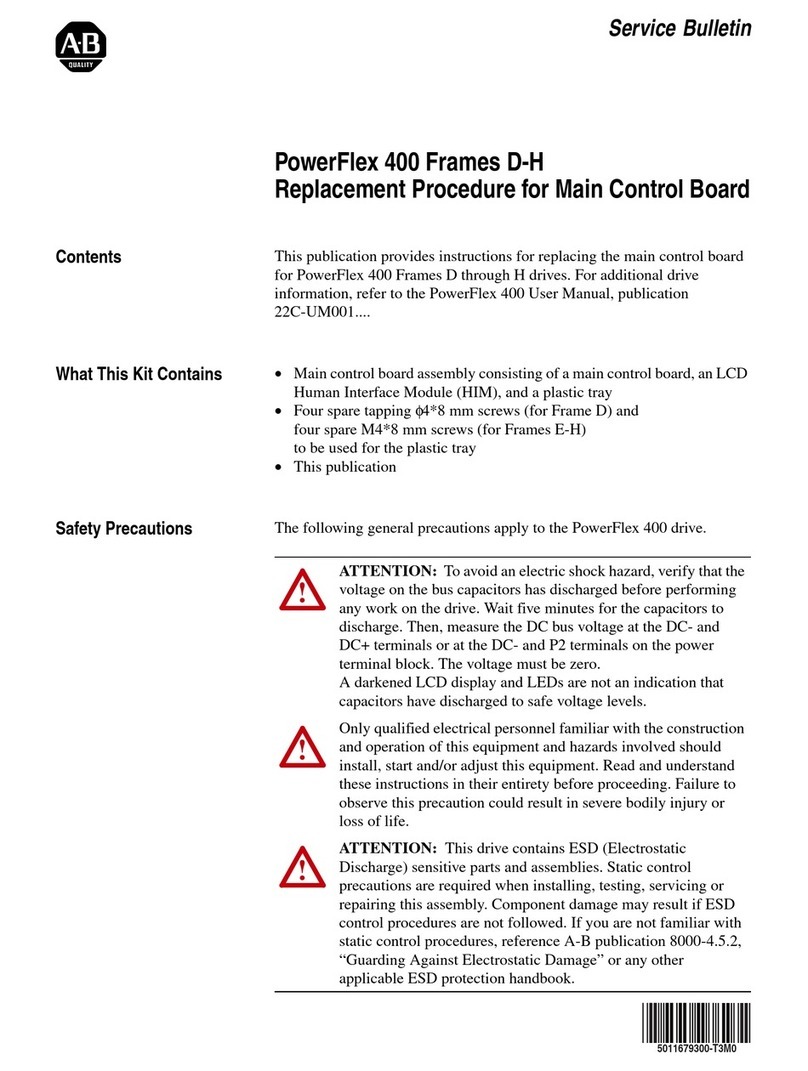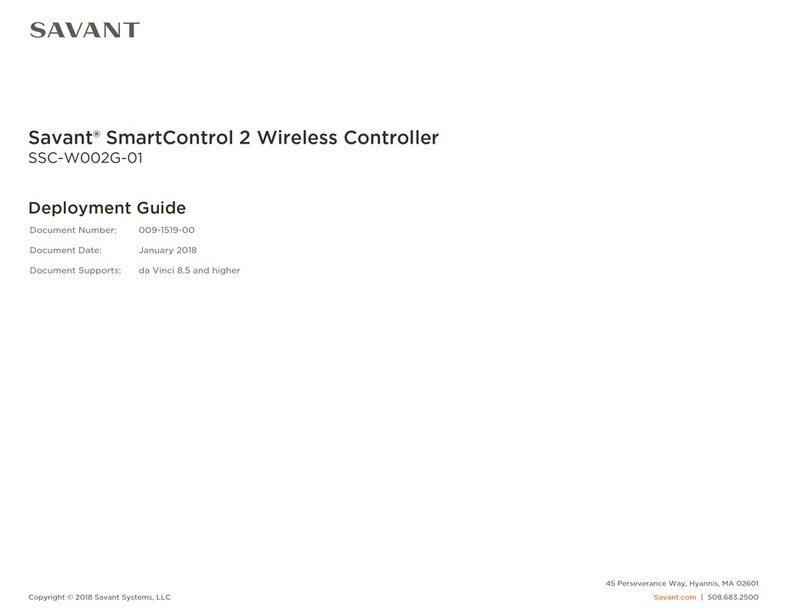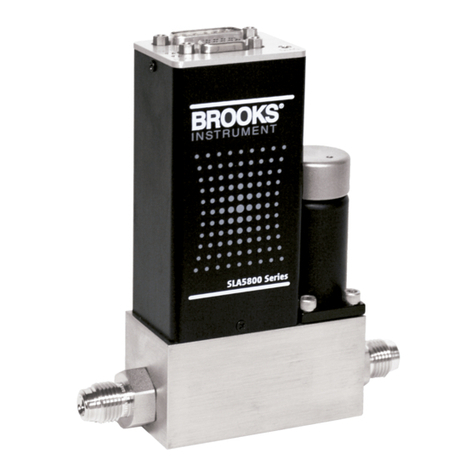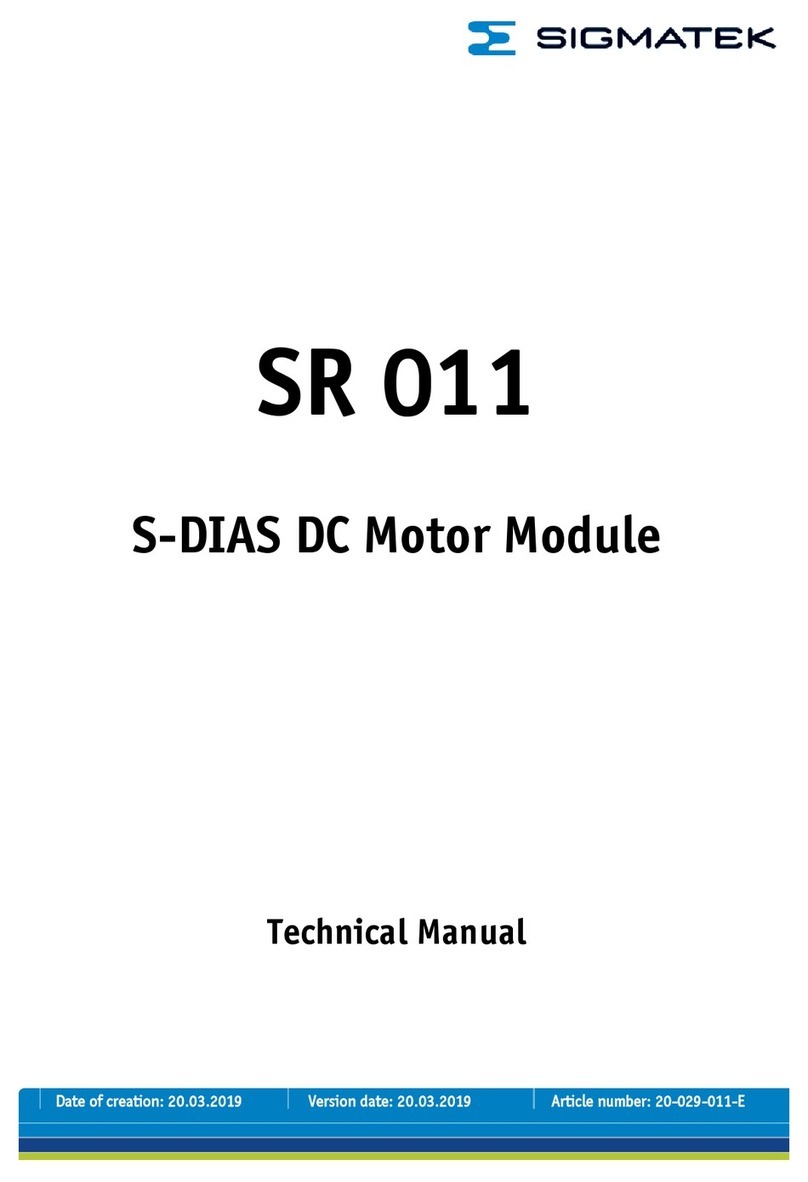
7
3355C–USB–4/05
AT43USB325
2. Architectural Overview
The AT43USB325 is a USB microcontroller with special peripherals for use as a programmable
keyboard controller.
The peripherals and features of the AT43USB325 microcontroller are similar to those of the
AT90S8515, with the exception of the following modifications:
• A downloadable SRAM or masked ROM for program memory
• No EEPROM
• No external data memory accesses
• No analog comparator, SPI, UART
• Idle mode not supported
• Additional GPIO port pins: PE, PF
• Four new external interrupt input pins: INTA, INTB, INTC, INTD
• USB Hub with attached function
The embedded USB hardware of the AT43USB325 is a compound device, consisting of a 5 port
hub with a permanently attached function on one port. The hub and attached function are two
independent USB devices, each having its own device addresses and control endpoints. The
hub has its dedicated interrupt endpoint, while the USB function has three additional program-
mable endpoints with 8-byte FIFOs.
The microcontroller always runs from a 12 MHz clock that is generated by the USB hardware.
While the nominal and average period of this clock is 83.3 ns, it may have single cycles that
deviate by ±20.8 ns during a phase adjustment by the SIE's clock/data separator of the USB
hardware.
The microcontroller shares most of the control and status registers of the megaAVR™Microcon-
troller Family. The registers for managing the USB operations are mapped into its SRAM space.
The I/O section on page 17 summarizes the available I/O registers. The “AVR Register Set” on
page 40 covers the AVR registers. Please refer to the Atmel AVR manual for more information.
The fast-access register file contains 32 x 8-bit general-purpose working registers with a single
clock cycle access time. This means that during one single clock cycle, one Arithmetic Logic Unit
(ALU) operation is executed. Two operands are output from the register file, the operation is
executed, and the result is stored back in the register file – in one clock cycle.
Six of the 32 registers can be used as three 16-bit indirect address register pointers for Data
Space addressing - enabling efficient address calculations. One of the three address pointers is
also used as the address pointer for look-up tables in program memory. These added function
registers are the 16-bit X-, Y- and Z-registers.
The ALU supports arithmetic and logic operations between registers or between a constant and
a register. Single register operations are also executed in the ALU. Figure 1-3 on page 6 shows
the AT43USB325 AVR Enhanced RISC microcontroller architecture.
In addition to the register operation, the conventional memory addressing modes can be used
on the register file as well. This is enabled by the fact that the register file is assigned the 32 low-
est Data Space addresses ($00 - $1 F), allowing them to be accessed as though they were
ordinary memory locations.
